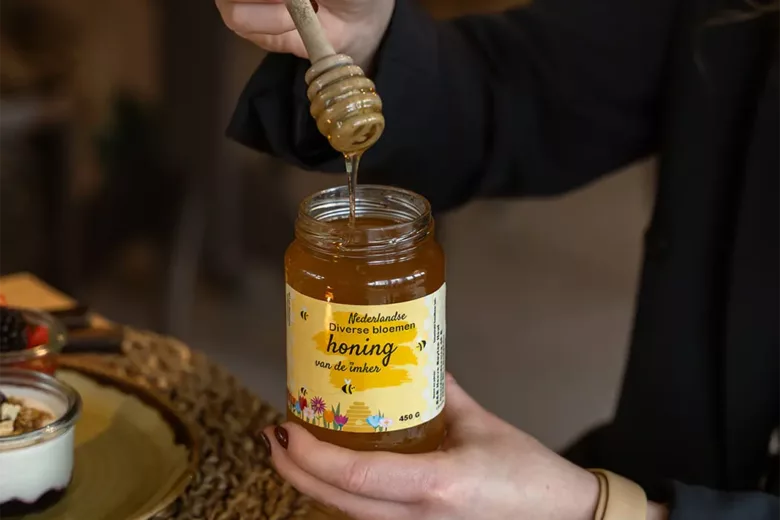In our garden is the Bee & Bee, where we maintain our own hives with great care and love. Here our Buyten bees collect the most beautiful nectar, which we process into raw, cold-spun honey: BuytenGold. This pure, unprocessed honey comes directly from our region. Henk, our beekeeper, takes care of the bees and the whole process with dedication.
We sell the honey in our living room, so you can enjoy the pure flavors of the season yourself. Taste the love and care that goes into each jar and discover the purity of BuytenGold – straight from our garden, and our region, BuytenHout.
The life of the honey bee
The honey bee is crucial for pollinating plants and making pure honey. A bee community includes three main roles: the queen, worker bees and males. Each of these roles has unique responsibilities within the hive.
Step 1: Nectar collection
The initial stage of the honey production process is the harvesting of nectar from flowers. Bees travel from one flower to another, utilizing their long tongues to suck up the nectar and store it in their honey stomach. During this journey, they add enzymes to the nectar, which are ultimately essential for its transformation into honey.
Step 2: Return to the hive
When a bee has collected enough nectar, she returns to the hive. There, she transfers the collected nectar into the mouth of another working bee. This act is repeated until the nectar has been passed from one bee to another several times. During these transfers, the nectar mixes with enzymes and the water content is reduced.
Step 3: Storage in honeycombs
The bees then store the enriched nectar in the cells of their honeycomb in the hive. They further reduce the moisture content of this nectar by flapping on it with their wings, which gradually thickens the nectar. Then these cells of the honeycomb are sealed with a waxy covering to protect the honey from moisture and other influences.
Step 4: Fermentation and aging
In this stage, fermentation and aging of the nectar begins. The enzymes added to the nectar convert the complex sugars into simpler sugars such as glucose and fructose. This process contributes to the unique flavor and texture of honey.
Step 5: Harvesting
When the honey is fully ripe, the bees begin opening the sealed cells of the honeycomb. They extract the ripe honey and store it in other parts of the hive. Beekeepers have the ability to carefully harvest the excess honey without disturbing the bee colony.

